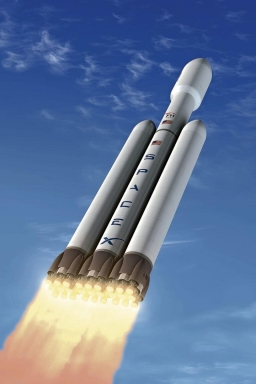The space
The space rocket orbits the Earth at an altitude of 400 km above the Earth's surface. Determine the magnitude of the centrifugal acceleration of the missile in its orbit.
Final Answer:

Tips for related online calculators
Do you want to convert length units?
You need to know the following knowledge to solve this word math problem:
Units of physical quantitiesthemes, topicsGrade of the word problem
Related math problems and questions:
- Artificial 57081
 Determine the average speed and orbit of the Earth's first artificial satellite. Its distance from the Earth's surface in the perigee was 226 km, and in the apogee, 947 km.
Determine the average speed and orbit of the Earth's first artificial satellite. Its distance from the Earth's surface in the perigee was 226 km, and in the apogee, 947 km. - The satellite
 The satellite orbiting the Earth at an altitude of 800 km has a speed of 7.46 km/s. How long would it have to move from the start to the orbit to reach this speed if it evenly accelerated its motion in a straight line? What is the acceleration of satellit
The satellite orbiting the Earth at an altitude of 800 km has a speed of 7.46 km/s. How long would it have to move from the start to the orbit to reach this speed if it evenly accelerated its motion in a straight line? What is the acceleration of satellit - Difference 69354
 An airplane flies at a speed of 920 km/h at an altitude of 11 km above the surface of the Earth, where the air density is p = 0.36 kg/m³. Determine the pressure difference above and below the plane's wing if the top of the plane is 10% longer than the bot
An airplane flies at a speed of 920 km/h at an altitude of 11 km above the surface of the Earth, where the air density is p = 0.36 kg/m³. Determine the pressure difference above and below the plane's wing if the top of the plane is 10% longer than the bot - Stationary 57031
 Determine the distance of a stationary satellite from the Earth's surface.
Determine the distance of a stationary satellite from the Earth's surface. - Mechanical energy
 A stone with a mass of 2 kg falls in free fall from a tower with a height of 80 m. What is its kinetic energy, and what is its potential energy: a) At the beginning of the fall, b) In 1 s from the beginning of the fall, c) Upon impact, d) What is its mech
A stone with a mass of 2 kg falls in free fall from a tower with a height of 80 m. What is its kinetic energy, and what is its potential energy: a) At the beginning of the fall, b) In 1 s from the beginning of the fall, c) Upon impact, d) What is its mech - The spacecraft
 The spacecraft spotted a radar device at an altitude angle alpha = 34 degrees 37 minutes and had a distance of u = 615km from Earth's observation point. Calculate the distance d of the spacecraft from Earth at the moment of observation. Earth is considere
The spacecraft spotted a radar device at an altitude angle alpha = 34 degrees 37 minutes and had a distance of u = 615km from Earth's observation point. Calculate the distance d of the spacecraft from Earth at the moment of observation. Earth is considere - Gravitational 63504
 Due to the force of gravity, a freely released body falls towards the Earth. The reaction to the gravitational force is of equal magnitude and acts on the Earth at its center. Explain why we do not observe the motion of the Earth towards the body.
Due to the force of gravity, a freely released body falls towards the Earth. The reaction to the gravitational force is of equal magnitude and acts on the Earth at its center. Explain why we do not observe the motion of the Earth towards the body.
